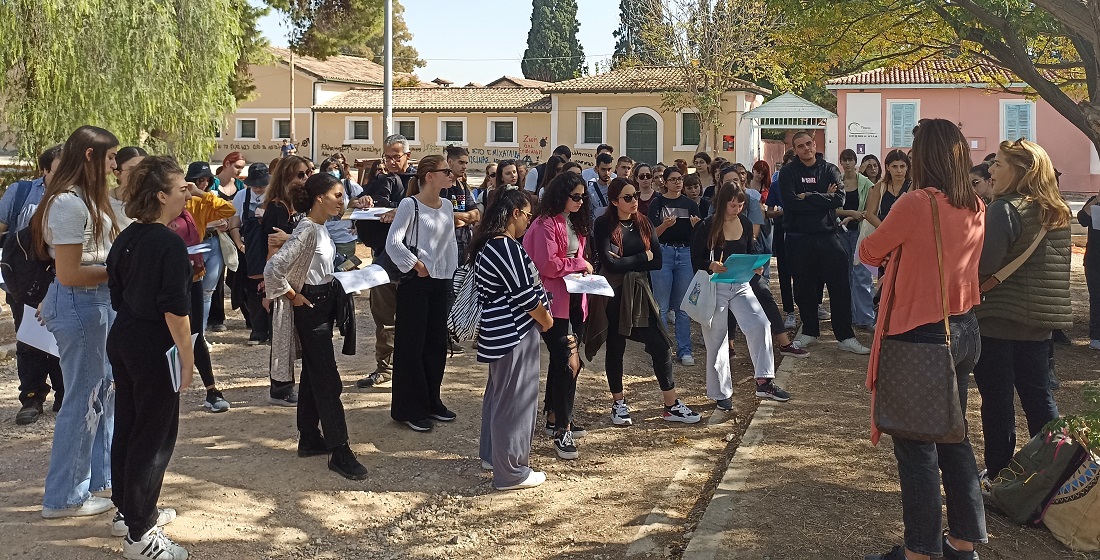
The University of West Attica innovates by offering an interdisciplinary postgraduate programme on “Sustainable Design of Architectural Space“. The Department of Interior Architecture of the University of West Attica, as a representative of academic and research education in the field of intervention and shaping of space in interior and exterior architectural environments, (a) following the developments in the fields of science, technology and art, (b) producing original research work, (c) exploring and launching innovative methods and practices, undertakes with the present project the further education of graduates of interior architects and graduates of the Department of Interior Architecture of the University of West Attica.
One of the most important members of the master’s programme is Dr. Maria Sinou, who has a degree in decorative and architectural studies and received her PhD (2004) from the renowned The Martin Centre of Architectural and Urban Studies at the University of Cambridge. Her doctoral thesis, in fact, was on the study of Environmental and Spatial Diversity in the Greek island of Sifnos. Along with dozens of presentations at conferences from Greece and Cyprus to Chile, Maria Sinou has a significant educational work that has been continuously culminating since 2011 until today as Associate Professor at University of West Attica and responsible for the undergraduate courses Sustainable Design I and Sustainable Design II. The versatile scientist spoke in detail at Days of Art in Greece about sustainable design, urban regeneration and the role of AI in her scientific field.
It is clear from your publications, the research projects you are involved in and your participation in conference events that you are serving some of the most critical issues of the day. Sustainability, urban regeneration, the circular economy. Tell us a little bit about your individual participations in research projects and how you see the urban environment of tomorrow being designed.
My research interests in public space planning focus on sustainable city issues at different levels and spatial scales. Starting from the neighbourhood scale, I have been studying the concept of the Mediterranean eco-neighbourhood since 2005. Since then, this concept has evolved and been enriched with new parameters and indicators of sustainability and sustainable design, resulting in the now modern practices of the smart/intelligent city, the zero emission/zero waste city, the people-centred city that reaches out to people by trying to satisfy their senses – the senseablecity and the cool neighbourhood. Our concept envisions a network of intelligent, sustainable and sensorial Intelligent (smart-sustainable-sensorial) urbanspaces that moves away from the traditional model of public space design. It aims to create an integrated grid for the creation of new environmentally sustainable, resilient and responsible spaces. Understanding the changing nature of city centre life and the uniqueness of the study areas, it will implement a multi-layered environmental strategy that responds to the local community and the growing need for healthy and sustainable environments. Part of this network includes existing open spaces, urban and peri-urban which may be parks, squares and others, small-scale open spaces such as pocket parks or semi-open spaces and very small ones such as parklets or very small islands of green-urban voids. In addition, urban furnishing, which is now becoming an interdisciplinary subject as it requires the collaboration of design, technology, artificial intelligence, open software, transport and other professions, contributes very significantly to this multi-level reading of public space, as does the implementation of green transport strategies. Other important issues are of course the use of appropriate materials that can, where appropriate, aim either at good health or at reducing the temperature of cities, as well as the issue of water management, which would be good to put high on the agenda as available resources diminish and water management becomes imperative.
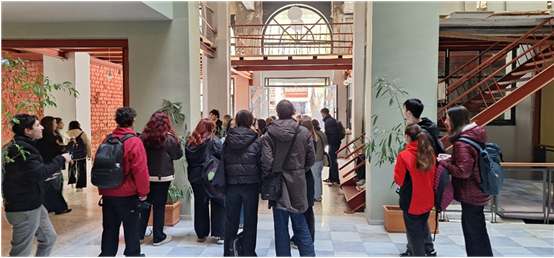
What will be the role of AI in the sustainable city of tomorrow? It can have a place in aesthetic issues without undermining human creativity and autonomy.
Probably the most widespread use of AI by practices is for visualizations for design ideas. Designers can take a section of an image of a building and place it in a hypothetical landscape, perhaps adding objects such as people and cars, this can now be done with a few text instructions. Architects can take their models at an early stage and apply stylistic iterations in real time, such as cycling different types of materials and different iterations of design ideology.Another very common practice now is text generation, the associated applications can be used as a research tool and text generator/editor, again responding only to a set of refinable text prompts.
Would you see a need for intervention in the local architecture of the region, as well as in the rural landscape? And if so, what are they?
The region needs, among other things, to protect its natural and cultural heritage. At the level of settlements, the preservation of identity, which has already been largely lost, should become a key objective because it is not only a key tourist attraction but also an integral part of our identity. The architectural heritage of our country, which includes not only monuments from antiquity, Byzantium and other periods, has many great examples of traditional settlements, from the fortified Cycladic settlements of the 1500s to the more modern island and mainland settlements with different characteristics and physiognomy. The gradual deterioration of the settlements since the advent of tourism around 1970 until today has reached a catastrophic level. The same is true of the rural area, which in the past was expressed either in the flat terraces held back by dry stone walls, the so-called ‘belts’, which have largely ceased to be cultivated, or in larger areas which are also occupied by other uses, mainly residential. The will of the State in enacting legislation and regulations is very important and should give greater weight to the preservation of identity and character by providing incentives in this direction.
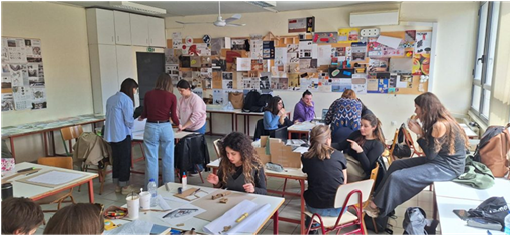
You have particularly raised the issues of education, in terms of aesthetics, walkability, architectural upgrading of the environment and with a green bias. Tell us a little bit about that. What are the functional and aesthetic necessities in your opinion and how could an architecturally renewed educational landscape contribute to the needs of the new era in education?
Sustainability issues have been introduced into the educational process already in primary education. We as a group in the tertiary level are doing activities related to educating the young children from us on sustainable building and neighbourhood design issues as we believe that it is something that is good to start at an early age. At the university level courses are taught in different departments of the University, in the Department of Interior Architecture where I serve the courses of Sustainable Design are in the core of the undergraduate program but the Department also offers a Master’s Degree Program entitled “Sustainable Design of Architectural Space” https://mssuda.uniwa.gr/ . Regarding the University’s strategy, a committee has been established on the Sustainable Development of the University, which aims to implement the 17 Goals in the University environment and to move towards a Green University in terms of building infrastructure, services, inclusion and collaboration.
How do you personally envision a friendly, aesthetically upgraded environment for the next generation?
I think it would be good to return to the study of the basic needs of human existence and to take a more human-centred approach to the design of space and the city. The role of new technology, which over the last 30 years has shaped a completely different level of communication and way of living, should be rigorously evaluated so that we can really make use of it and not be captive to it. I envision an environment centred on human coexistence in a harmonious relationship between the natural and built environment in the modern technological age.

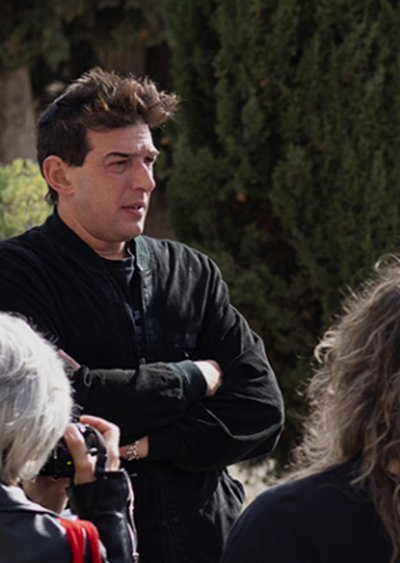
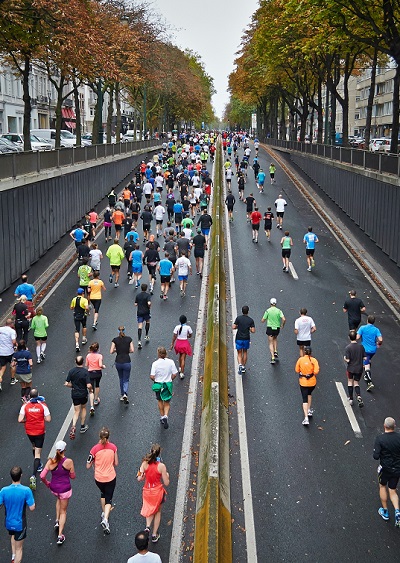




Leave A Comment